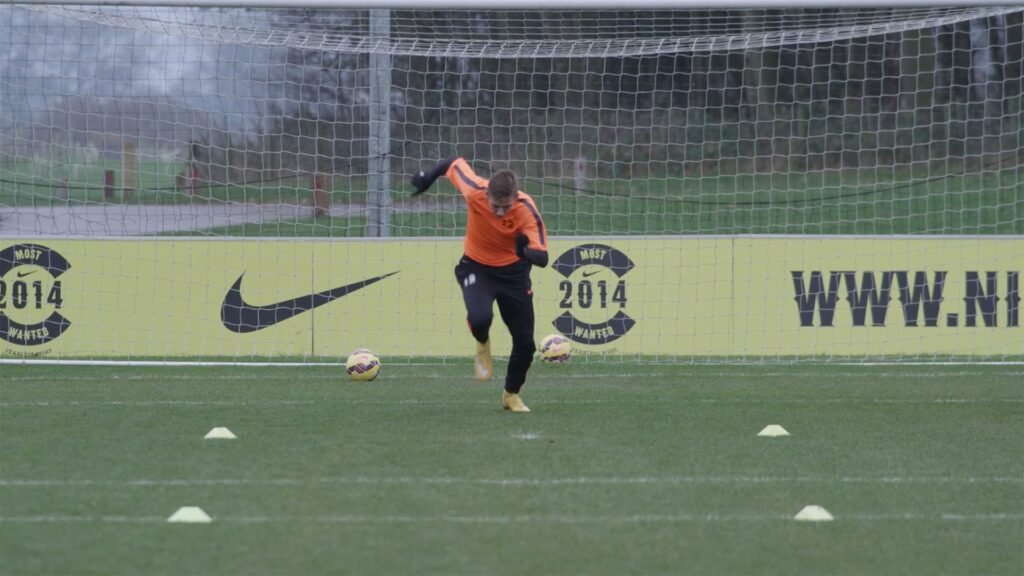You’re in the 90th minute of a crucial game. Your team’s tied, and you know you need just one more burst of energy to create a scoring chance. But your legs feel heavy, your breath is ragged, and your mind screams for rest. It’s frustrating but don’t worry, this guide will equip you with the knowledge and tools to transform your on-field stamina.
We’ll delve into training techniques used by world-class players like N’Golo Kante, renowned for his tireless work rate, so you can get fit for soccer dominate the pitch.

Table of Contents
The 2 Types of Stamina Used In Soccer
Not all stamina is created equal. Soccer demands a unique blend of two key types:
- Aerobic Endurance: This allows you to sustain moderate-intensity activity, like jogging, for extended periods. It’s like having a large gas tank for your body.
- Anaerobic Endurance: This powers high-intensity bursts, like sprints and tackles. Think of it as your nitro boost for those crucial moments.
A well-rounded soccer player excels in both aspects. Let’s explore how to develop them.
Improving Your Aerobic Engine:
Think long-distance running for this one. Aerobic training strengthens your heart and lungs, allowing them to deliver oxygen more efficiently to your muscles. Here are some effective methods:
- Continuous Running: Start with comfortable jogs, gradually increasing distance and duration over time. Aim for at least 30 minutes, 3-4 times a week.
- Tempo Runs: Pick a pace that’s comfortably challenging, where you can still hold a conversation. Maintain this for intervals, gradually increasing the length of each interval.

Building a strong aerobic base is essential for any soccer player. It allows you to recover faster between sprints and maintain high work rates throughout the game
Improving Your Anaerobic Engine:
Think short, intense bursts with recovery periods. This mimics the demands of a soccer match, where players alternate between explosive sprints and periods of walking or jogging. Here are some drills to get your heart pumping:
- Interval Training: Alternate between high-intensity sprints (think 30 seconds) and recovery jogs (around 1-2 minutes). Gradually increase the intensity and duration of the sprints as you get fitter.
- Shuttle Runs: Set up cones 20-30 meters apart. Sprint to one cone, touch it, and then sprint back to the starting point. Repeat for a set number of times with short rest periods.

Remember: Don’t neglect proper form during these drills to avoid injuries.
Nutrition and Diet: Eating for Stamina
Your body needs the right fuel to perform at its best. Here’s what to focus on:
- Complex Carbs: Whole grains, fruits, and vegetables provide sustained energy for those long runs.
- Lean Protein: Chicken, fish, and beans help build and repair muscle tissue, crucial for recovery.
- Healthy Fats: Avocados, nuts, and olive oil keep you satiated and support overall health.

Stay Hydrated: Aim for at least 2-3 liters of water daily, especially on training days.
Action Plan To Create Your Stamina Plan:
Now that you’re armed with knowledge, it’s time to create your personalized action plan:
- Assess Your Current Stamina: Time yourself running a specific distance or complete a set number of sprints. Track your progress weekly.
- Set SMART Goals: Specific, Measurable, Achievable, Relevant, and Time-bound. For example, aim to increase your running distance by 10% in the next month.
- Choose Your Training Methods: Select a mix of aerobic and anaerobic exercises that fit your schedule and preferences.
- Fuel Your Body Right: Prioritize a balanced diet and stay hydrated.
- Listen to Your Body: Take rest days when needed and avoid pushing yourself to the point of injury.



